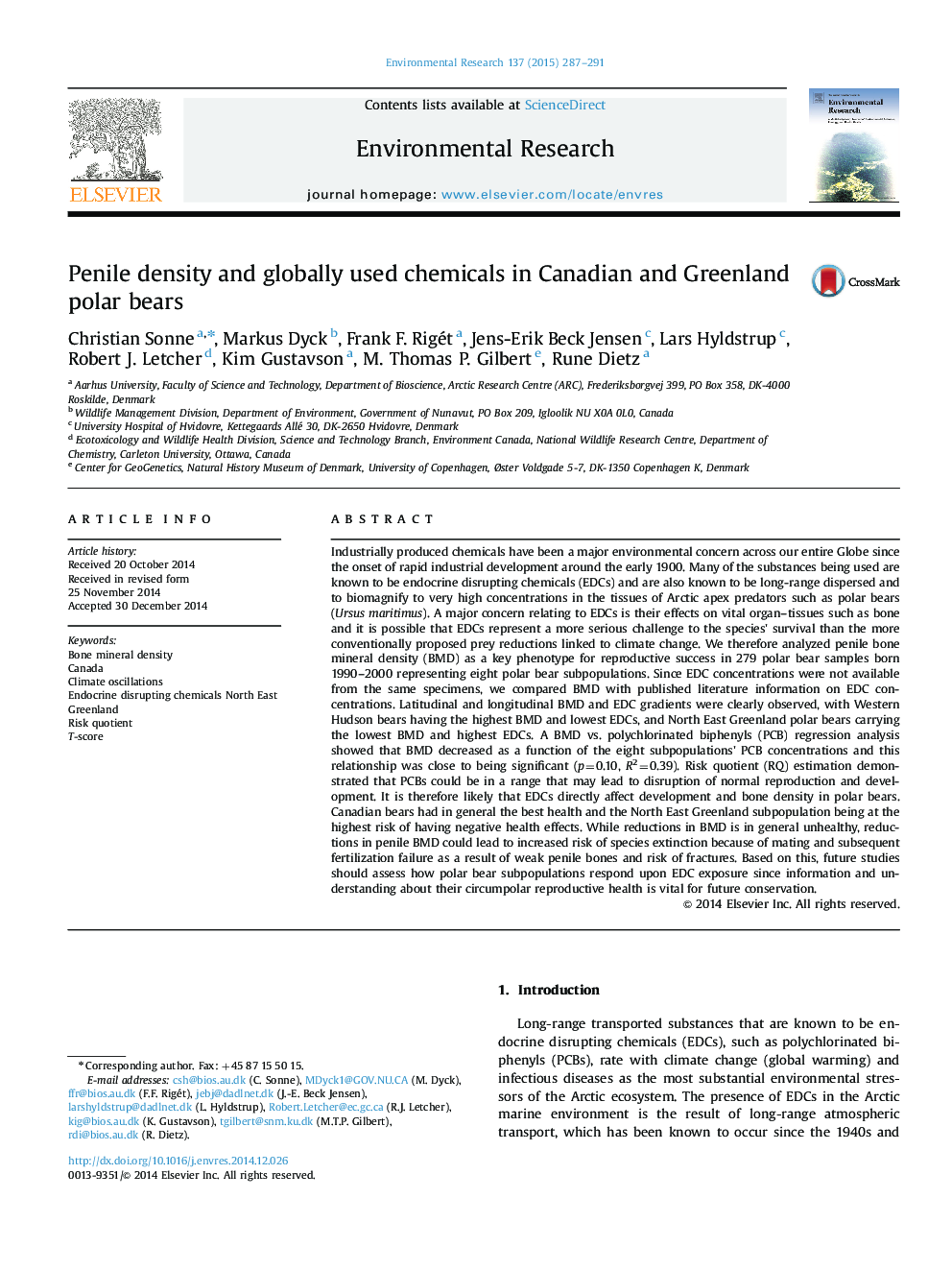| کد مقاله | کد نشریه | سال انتشار | مقاله انگلیسی | نسخه تمام متن |
|---|---|---|---|---|
| 6352711 | 1622564 | 2015 | 5 صفحه PDF | دانلود رایگان |
عنوان انگلیسی مقاله ISI
Penile density and globally used chemicals in Canadian and Greenland polar bears
ترجمه فارسی عنوان
تراکم قلم و مواد شیمیایی در جهان استفاده می شود در خفا های قطبی کانادا و گرینلند
دانلود مقاله + سفارش ترجمه
دانلود مقاله ISI انگلیسی
رایگان برای ایرانیان
کلمات کلیدی
موضوعات مرتبط
علوم زیستی و بیوفناوری
علوم محیط زیست
بهداشت، سم شناسی و جهش زایی
چکیده انگلیسی
Industrially produced chemicals have been a major environmental concern across our entire Globe since the onset of rapid industrial development around the early 1900. Many of the substances being used are known to be endocrine disrupting chemicals (EDCs) and are also known to be long-range dispersed and to biomagnify to very high concentrations in the tissues of Arctic apex predators such as polar bears (Ursus maritimus). A major concern relating to EDCs is their effects on vital organ-tissues such as bone and it is possible that EDCs represent a more serious challenge to the species' survival than the more conventionally proposed prey reductions linked to climate change. We therefore analyzed penile bone mineral density (BMD) as a key phenotype for reproductive success in 279 polar bear samples born 1990-2000 representing eight polar bear subpopulations. Since EDC concentrations were not available from the same specimens, we compared BMD with published literature information on EDC concentrations. Latitudinal and longitudinal BMD and EDC gradients were clearly observed, with Western Hudson bears having the highest BMD and lowest EDCs, and North East Greenland polar bears carrying the lowest BMD and highest EDCs. A BMD vs. polychlorinated biphenyls (PCB) regression analysis showed that BMD decreased as a function of the eight subpopulations' PCB concentrations and this relationship was close to being significant (p=0.10, R2=0.39). Risk quotient (RQ) estimation demonstrated that PCBs could be in a range that may lead to disruption of normal reproduction and development. It is therefore likely that EDCs directly affect development and bone density in polar bears. Canadian bears had in general the best health and the North East Greenland subpopulation being at the highest risk of having negative health effects. While reductions in BMD is in general unhealthy, reductions in penile BMD could lead to increased risk of species extinction because of mating and subsequent fertilization failure as a result of weak penile bones and risk of fractures. Based on this, future studies should assess how polar bear subpopulations respond upon EDC exposure since information and understanding about their circumpolar reproductive health is vital for future conservation.
ناشر
Database: Elsevier - ScienceDirect (ساینس دایرکت)
Journal: Environmental Research - Volume 137, February 2015, Pages 287-291
Journal: Environmental Research - Volume 137, February 2015, Pages 287-291
نویسندگان
Christian Sonne, Markus Dyck, Frank F. Rigét, Jens-Erik Beck Jensen, Lars Hyldstrup, Robert J. Letcher, Kim Gustavson, M. Thomas P. Gilbert, Rune Dietz,
